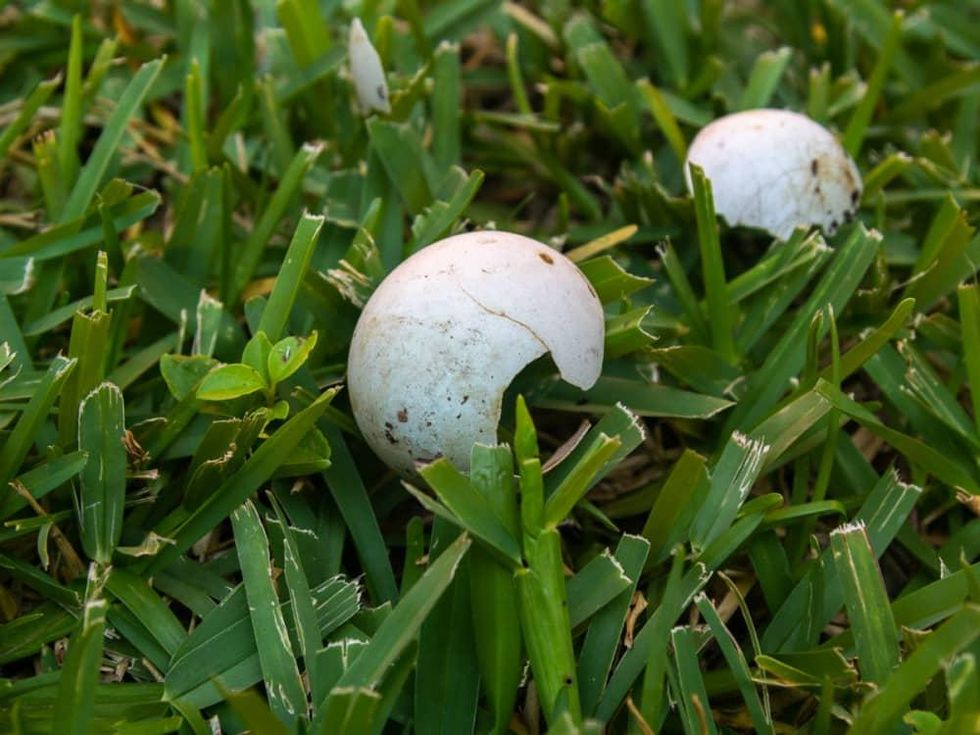Bird News
Herons summering at Casa View home make 2 adorable baby chicks
Editor's note: This is the second installment in a series about yellow-crowned night herons by Marc Lee, a resident of the Casa View neighborhood of Dallas.
Two months after a pair of yellow-crowned night herons came to nest in the yard at my Dallas home, they hatched baby chicks.
I didn't actually see the chicks. I put this together one day after discovering egg shells in my yard.
At the same time, I noted a change in the adults' behavior. They were flying back and forth to White Rock Lake to find food and bring it back to the brood. They'd fly in shifts; unlike the old days, I stopped seeing them together.
A few weeks went by before I got my first glimpse. Every day, I looked at the nest through my camera lens, until I finally spotted two chicks with fuzzy brown heads, peeking out from the edge.
Nick Kanakis, a wildlife photographer and Bird-Friendly Communities educator for the Trinity River Audubon Center, says that the chicks grow up remarkably fast. "The average time to leave the nest is 40 days," he says.
Unlike the adults' eye-catching feather patterns and intense colors, the chicks were dun-colored with white spots, blending into the gray bark of the oak tree. They maintain this appearance for almost two years until they become mature enough to breed.
While they wait for their parents to deliver food, the chicks hang out in the trees, taking in their environment, inspecting leaves and bugs, and scrutinizing me as I take photos.
This carefree childhood won't last long. Once their parents sense that they are independent and therefore competition for food, the chicks will be sent on their way.
Heron chicks are a common rescue project on the streets of Dallas that inevitably end up at Rogers Wildlife Rehabilitation Center, an avian rehabilitation and education center in Hutchens, just south of Dallas.
Kathy Rogers, the center's director, says that they currently have 30 or 40 heron chicks right now, most displaced by storms or threats from other birds.
"When the parents leave to go find food, the kids start beating each other up, or there are fights with birds from other nests," she says. "The chicks fall to the ground where ants and flies get at them. It's a nightmare."
The chicks are fed smelt, minnows, and beef heart, similar to what they would eat in the wild. "They'll eat whatever their parents throw up in the nest," Rogers says. It costs $150 to rehabilitate a night heron chick, and the center accepts donations on its website.
Gailon Brehm, regional director for the Texas Ornithological Society, says that the chicks will first leave in what is known as a dispersal, where they can range hundreds of miles from these original nests before they migrate south for the winter. It's likely that the young birds will stay together.
The parents are another story. They'll return to the same location year after year. Brehm calls it "site fidelity."
I may just see new broods from this pair for another decade.



